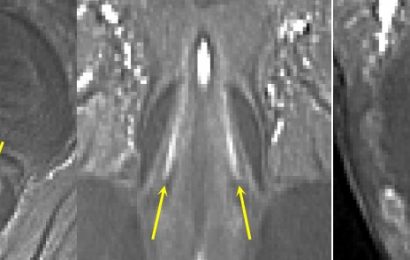A recent study posted to the Research Square* preprint server depicted that distantly linked tiny mammal species from the Democratic Republic of the Congo (DRC) harbor monkeypox viruses (MPXV).

Background
The MPXV, belonging to the Orthopoxvirus (OPXV) genus under the Poxviridae family, causes human monkeypox, a zoonotic illness. Its clinical manifestations are similar to smallpox. The case fatality rate in adults is typically low, but it might exceed 10% in children.
Two MPXV genetic clades were recognized in Africa, where the virus is typically found. The genetic clades discerned are a Congo Basin (MPXV-CB) clade found exclusively in Central Africa and a West African (MPXV-WA) clade found only in nations west of Cameroon.
Although the MPXV-CB was previously thought to be more transmissible and virulent in humans due to the small sample size, the 2017 to 2018 MPXV-WA outbreak in Nigeria revealed MPXV-WA's enhanced virulence. The growing prevalence and interpersonal transmission of both strains in endemic locations underline the need for a deeper understanding of the eco-epidemiological determinants of the disease.
The natural MPXV reservoir is unknown, as is the assumed animal source of initial human infections. MPXV has only been extracted from three African indigenous wild mammals: Funisciurus anerythrus (redless tree squirrel) in the DRC and Cercocebus atys atys (a sooty mangabey), Pan troglodytes verus (western chimpanzees) in the Ta National Park in Côte d'Ivoire.
While primates are believed to be incidental hosts, rodents such as Heliosciurus sp., Cricetomys, Funisciurus, and Graphiurus are considered possible reservoirs of the virus. Nevertheless, empirical evidence to back up these theories is limited and primarily centered on serological information or deoxyribonucleic acid (DNA) amplicons lacking sequencing confirmation.
About the study
In the current work, the researchers evaluated complete and near-complete MPXV genomes in a Crocidura littoralis (shrew), Funisciurus bayonii, and F. anerythrus (squirrels) from the DRC. Further, they assessed Cricetomys sp. 2 and Stochomys longicaudatus (rats) for the presence of MPXV sequences.
The team has been monitoring small mammal biodiversity and pathogens in numerous sites in the DRC's Tshopo and Ituri provinces since 2010. A subset of 256 randomly selected samples, including tissues gathered over six years from 97 rodents, 93 shrews, and 66 bats, were tested for the existence of MPXV DNA utilizing two polymerase chain reaction (PCR) evaluations aiming at distinct viral genes (haemagglutinin and P4A), with positives validated by Sanger sequencing. The investigators applied high-throughput sequencing and in-solution hybridization capture to F. anerythrus, C. littoralis, and F. bayonii.
Results and discussions
The study results demonstrated that the tissues from four rodent species, namely Funisciurus bayonii, Funisciurus anerythrus, Cricetomys sp. 2, and Stochomys longicaudatus, and one shrew, Crocidura littoralis, harbored MPXV DNA. The team successfully extracted two whole MPXV genomes from C. littoralis, F. anerythrus, and one partial (59%) genome from F. bayonii. Hence, MPXV probably spontaneously circulates in numerous, distantly associated rodent species from a minimum of three diverse families, specifically Nesomyidae, Sciuridae, and Muridae, and in shrews from the order Eulipotyphla. Although few of these detection incidences might indicate dead-end infections, they were consistent with the idea that MPXV has a wide host diversity and potentially a complicated multi-host ecology.
The fact that MPXV was extracted initially from a Funisciurus squirrel may have skewed the authors' view of MPXV ecology, as a multitude of follow-up research focused on squirrels and might have overlooked additional animal orders such as bats or shrews. The researchers also pointed out that the definition of a primary reservoir can vary depending on the situation.
Further, the MPXVs reported in the F. anerythrus and shrew were highly correlated to one another and belong within the range of MPXV strains observed in people in Central Africa, according to Bayesian phylogenetic and maximum likelihood (ML) studies. They also possessed the time to the most recent common ancestor (tMRCA), based on the closest reported genomes from 1959. ML analysis of the partial MPXV genome discovered in F. bayonii revealed that it groups with other MPXV-CB strains.
The discovery of new animal-stemmed sequences allowed researchers to reevaluate the long-held theory that MPXV diversity was primarily due to past vicariance processes triggered by climate-mediated forest-habitat constriction, like the opening of the Dahomey gap or the Last Glacial Maximum. Interestingly, the scientists discovered that such diversity was very recent to be coherent with these occurrences, with the best model putting the MPXV tree root at around 600 years old.
Nonetheless, given the minor variance among MPXV-CB and MPXV-WA, the team did not anticipate this might substantially impact MPXV's projected evolutionary time scale, making it agreeable with important climate parameters as presented by Nakazawa et al. Instead, they believe that the geographical separation of the two clades happened more recently or that alternate evolutionary factors were at work.
Conclusions
Overall, the present research implies that, in addition to squirrels (families Nesomyidae and Muridae) and shrews (order Eulipotyphla), multiple other rodents could be possible monkeypox viral reservoirs. Furthermore, the findings add to the scant evidence that Funisciurus squirrels could be key MPXV reservoirs.
To conclude, the current study enhances the understanding of MPXV ecology by demonstrating the prevalence of MPXV DNA in numerous forest-residing rodents and shrews. This discovery necessitates heightened surveillance in a broader array of African mammals to learn more about MPXV's host distribution and range and analyze if various animal cohorts possess different MPXV strains with variable virulence.
*Important notice
Research Square publishes preliminary scientific reports that are not peer-reviewed and, therefore, should not be regarded as conclusive, guide clinical practice/health-related behavior, or treated as established information.
- Mariën, J. et al. (2021) "Monkeypox viruses circulate in distantly-related small mammal species in the Democratic Republic of the Congo". Research Square. doi: 10.21203/rs.3.rs-414280/v1. https://www.researchsquare.com/article/rs-414280/v1
Posted in: Medical Science News | Medical Research News | Disease/Infection News
Tags: Children, Coronavirus Disease COVID-19, DNA, Genes, Genetic, Genome, High-Throughput Sequencing, Hybridization, Monkeypox, Polymerase, Polymerase Chain Reaction, Research, Sanger sequencing, Smallpox, Virus

Written by
Shanet Susan Alex
Shanet Susan Alex, a medical writer, based in Kerala, India, is a Doctor of Pharmacy graduate from Kerala University of Health Sciences. Her academic background is in clinical pharmacy and research, and she is passionate about medical writing. Shanet has published papers in the International Journal of Medical Science and Current Research (IJMSCR), the International Journal of Pharmacy (IJP), and the International Journal of Medical Science and Applied Research (IJMSAR). Apart from work, she enjoys listening to music and watching movies.
Source: Read Full Article


